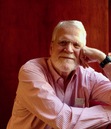Mark Scott Smith's Blog: Enemy in the Mirror, page 62
December 12, 2019
Peanuts Comic Strip
Peanuts, an American comic strip, written and illustrated by Charles M. Schulz, ran from October 1950, to February 2000.
17,897 published Peanuts strips ran in over 2,600 newspapers.
Translated into 21 languages, Peanuts had a readership of ~355 million in 75 countries.
Source: Wikipedia
The post Peanuts Comic Strip appeared first on Enemy in the Mirror.
December 9, 2019
Pusan Perimeter
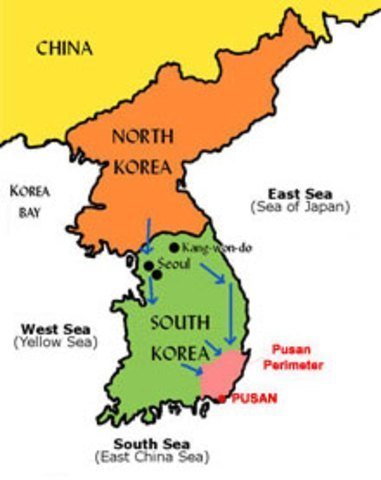
By September 1950 the North Korean Peoples Army (KPA) reached their farthest point of advance in South Korea.
Although the KPA strength had been nearly cut in half and it lacked sufficient armor and supplies, the North Koreans reduced the area under control by United Nations forces to a 5,000-square-mile rectangle centered on the critical southeastern port of Pusan.
The post Pusan Perimeter appeared first on Enemy in the Mirror.
December 5, 2019
Miles Davis
Miles Dewey Davis III, (1926-1991) was an American jazz trumpeter, bandleader and composer.
In 1948, Davis formed a short-lived group with Gerry Mulligan, J.J. Johnson, Kenny Clarke, and Lee Konitz with arrangements that juxtaposed the flexible, improvisatory nature of bebop with a thickly textured orchestral sound. Tracks released by the group in 1949-50 changed the course of modern jazz and paved the way for the West Coast styles of the 1950s.
Davis explored the trumpet’s middle register, experimenting with harmonies and rhythms and varying the phrasing of his improvisations. With the occasional exception of multi-note flurries, his melodic style was direct and un-ornamented, based on quarter notes and rich with inflections. The deliberation, pacing, and lyricism in his improvisations were striking.
Source: Encyclopaedia Britannica
The post Miles Davis appeared first on Enemy in the Mirror.
December 2, 2019
Truman Seizes Railroads
In August 1950, to prevent a pending strike during wartime, President Harry S. Truman issued an executive order directing the U.S. Army to seize control of America’s railroads.
President Truman had previously intervened in post-war labor strikes. This time, however, America was at war and much of its economic and defense infrastructure was dependent upon the smooth functioning of railroads.
In July 1950 settlement recommendations by an emergency board were rejected and, by August 25, a strike seemed imminent.
Truman stated: “…governmental seizure [of the railroads] is imperative for the protection of American citizens as well as essential to the national defense and security of the Nation.”
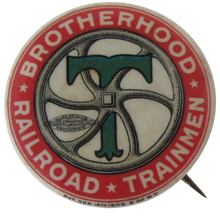
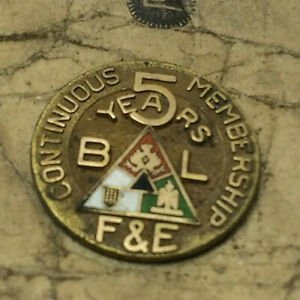
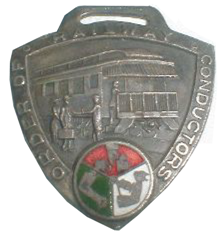
The railroad strike lasted until May 1952 when the Brotherhood of Railroad Trainmen, the Order of Railway Conductors and the Brotherhood of Locomotive Firemen and Enginemen, accepted the administration’s terms and resumed work.
Source: POLITICO
The post Truman Seizes Railroads appeared first on Enemy in the Mirror.
November 28, 2019
Thanksgiving
A severe blizzard began the day after Thanksgiving
Meanwhile in Korea U.S. troops were at the Chinese border
The post Thanksgiving appeared first on Enemy in the Mirror.
November 25, 2019
Korean War ~ Summer 1950
Well-trained and equipped, the North Korean People’s Army swept rapidly south in the first phase of the Korean war. In contrast, the South’s Republic of Korea forces were often disorganized and inclined to flee the battle field.
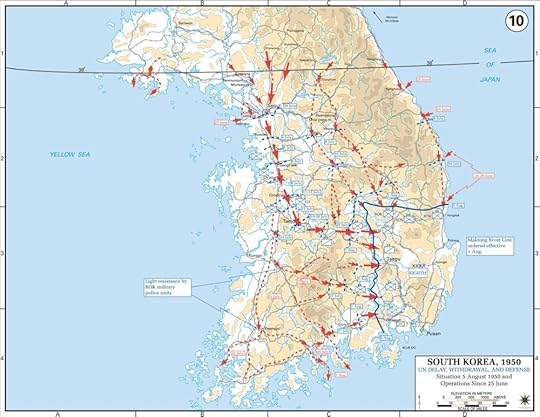 http://www.emersonkent.com/
http://www.emersonkent.com/July 5, 1950
The first U.S. Marines – leading the U.N. forces – joined battle shortly after landing on the Korean Peninsula. U.S. troops suffered heavy casualties and the four American divisions were driven back into a perimeter around the southern port city of Pusan.
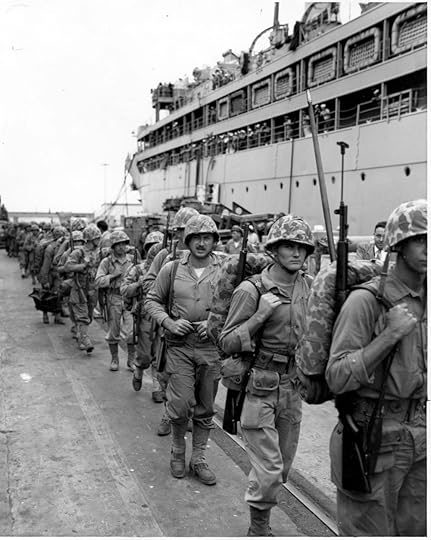 Pinterest
PinterestThe post Korean War ~ Summer 1950 appeared first on Enemy in the Mirror.
November 21, 2019
Task Force Smith

On July 5, 1950 the first engagement between United States forces and the North Korean People’s Army (KPA) occurred near the city of Osan south of Seoul Korea.
400 infantry men of Task Force Smith, supported by an artillery battery, were ordered to fight a rearguard action to delay the advancing KPA while additional U.S. troops arrived in Korea to form a defensive line to the south.
Equipped only with a few 105 mm Howitzers, 2.36-in. rocket launchers and 57 mm recoilless rifles, Task Force Smith lacked effective weapons against the T-34 Soviet tanks of the KPA.
 History Central
History CentralAmerican Ground Forces Enter the Battle
At 0816 the first American artillery fire of the Korean War hurtled through the air toward the North Korean tanks. The number two howitzer fired the first two rounds, and the other pieces then joined in the firing. The artillery took the tanks under fire at a range of approximately 4,000 yards, about 2,000 yards in front of the American infantry. The forward observer quickly adjusted the fire and shells began landing among the tanks. But the watching infantrymen saw the tanks keep on coming, undeterred by the exploding artillery shells.
When the enemy tank column approached within 700 yards of the infantry position, the two recoilless rifles took it under fire. They scored direct hits, but apparently did not damage the tanks … a bazooka from the ditch along the east side of the road fired twenty-two rockets at approximately fifteen yards’ range against the rear of the tanks where their armor was weakest. Whether they were effective is doubtful. The two lead tanks, however, were stopped just through the pass when they came under direct fire of the single 105-mm. howitzer using HEAT ammunition….
The two damaged tanks pulled off to the side of the road, clearing the way for those following. One of the two caught fire and burned. Two men emerged from its turret with their hands up. A third jumped out with a burp gun in his hands and fired directly into a machine gun position, killing the assistant gunner. This unidentified machine gunner probably was the first American ground soldier killed in action in Korea. American fire killed the three North Koreans. The six rounds of HEAT ammunition at the forward gun were soon expended, leaving only the HE shells which ricocheted off the tanks. The third tank through the pass knocked out the forward gun and wounded one of its crew members.
The tanks did not stop to engage the infantry; they merely fired on them as they came through. Following the first group of 8 tanks came others at short intervals, usually in groups of 4. These, too, went unhesitatingly through the infantry position and on down the road toward the artillery position. In all, there were 33 tanks in the column. The last passed through the infantry position by 0900, about an hour after the lead tanks had reached the saddle. In this hour, tank fire had killed or wounded approximately twenty men in Smith’s position.
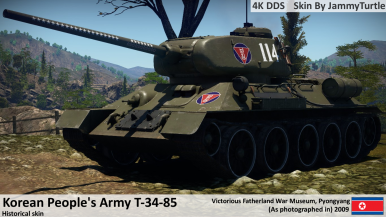 War Thunder Live
War Thunder LiveAfter the KPA tank column overran Task Force Smith, the Task Force opened fire on ~ 5,000 North Korean infantry approaching its position, temporarily stopping their advance. The KPA, however, eventually overwhelmed the American positions and forced Task Force Smith into a disorderly retreat.
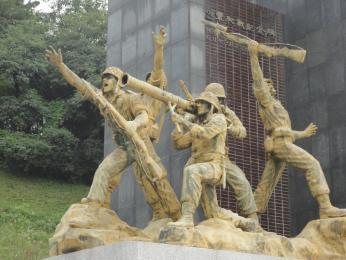 Task Force Smith Memorial/Osan Korea
Task Force Smith Memorial/Osan KoreaTask Force Smith Casualties and lossesU.S. Army:
60 killed
21 wounded
82 captured
1 howitzer destroyed
5 howitzers disabled
KPA:
42 killed
85 wounded
1 tank destroyed
3 tanks disabled
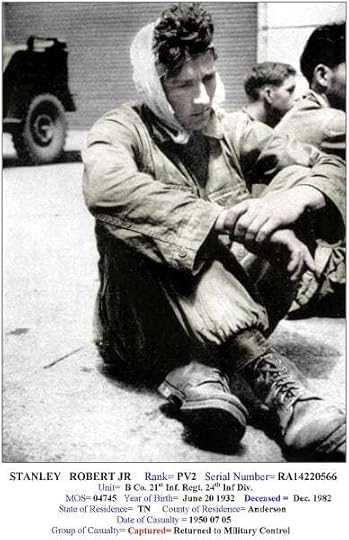 Gimlet4ever
Gimlet4everThe post Task Force Smith appeared first on Enemy in the Mirror.
November 18, 2019
Marilyn Monroe
SOURCE: Wikipedia
Born Norma Jeane Mortenson in 1926, she began working as a model in 1944 using the name Jean Norman. By 1946, she had appeared on 33 magazine covers for publications such as Pageant, U.S. Camera, Laff, and Peek.
In 1946 she was signed by 20th Century Fox, using the stage name Marilyn Monroe.
She had bit parts in Dangerous Years (1947) and Scudda Hoo! Scudda Hay! (1948).
In 1948, with her hairline raised and hair bleached platinum blonde, she starred as a chorus girl in Ladies of the Chorus
In 1949 she posed nude for photographer Tom Kelley.

In 1950, after plastic surgery on her face, she had bit parts in Love Happy, A Ticket to Tomahawk, Right Cross and The Fireball.
In 1950, she also had minor supporting roles in two critically-acclaimed films: Joseph Mankiewicz’s All About Eve and John Huston’s The Asphalt Jungle.
 PicClick
PicClickThe post Marilyn Monroe appeared first on Enemy in the Mirror.
November 14, 2019
Seoul Falls
On June 25, 1950 the Korean People’s Army (KPA) equipped with T-34 tanks and artillery support, advanced rapidly on the South Korea capital of Seoul.
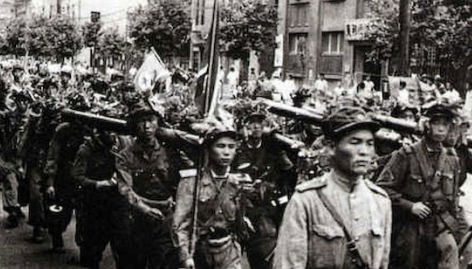 http://www.famousdaily.com/history/ba...
http://www.famousdaily.com/history/ba...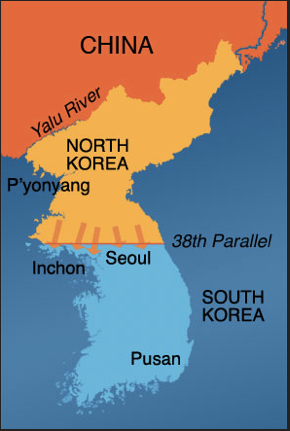 Sutori
Sutori
The Republic of Korea (ROK) Army, lacking both tanks and adequate anti-tank weapons could not stop the KPA advance. Additionally, South Korean forces blew up the bridge across the Han River, trapping their own soldiers and killing hundreds of refugees evacuating the city.
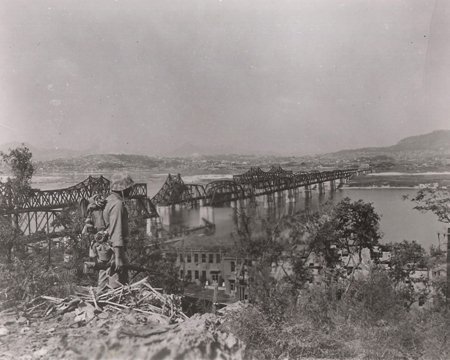 Robert Neff Collection
Robert Neff Collection Capt. F. L. Scheiber/U.S. Army/Science Source
Capt. F. L. Scheiber/U.S. Army/Science Source
By June 28, the KPA had captured Seoul.
The post Seoul Falls appeared first on Enemy in the Mirror.
November 11, 2019
Veterans Day
Veterans Day was formerly known as Armistice Day, a U.S. legal holiday to honor the end of World War I on November 11, 1918.
In 1938 U.S. legislation dedicated November 11 as a day to celebrate the cause of world peace— hereafter celebrated as Armistice Day.
In 1954, after both WWII and the Korean War, the U.S. Congress amended the Act of 1938 by substituting the word “veterans” for the word “Armistice.”
November 11 became a day to honor American veterans of all wars.

Veterans Day is distinct from Memorial Day, a U.S. public holiday in May. Veterans Day celebrates the service of all U.S. military veterans, while Memorial Day honors those who have died while in military service.

Another military holiday, Armed Forces Day, occurs in May to honor both those who served in the U.S. military in the past and those who are presently serving.
The post Veterans Day appeared first on Enemy in the Mirror.
Enemy in the Mirror
I began by posting events around the turn This website www.enemyinmirror.com explores the consciousness, diplomacy, emotion, prejudice and psychology of 20th Century America and her enemies in wartime.
I began by posting events around the turn of the 20th century as I was researching my first novel about the Pacific War. I continued through WWII for my second novel about the Battle of the Atlantic. Now I am beginning to look at the Cold War as I gather information for my next novel about the Korean War. ...more
- Mark Scott Smith's profile
- 7 followers


